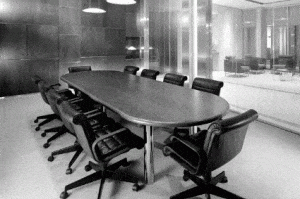Summary: Office space demand moving lower eventually?
With disappearance of music stores, Blockbuster video and books stores showing us the trend is moving to digitized media does this mean the commercial real estate office space should take a hard look at changes occurring in the office market?
According to Norm G. Miller, PhD, a professor at the University of San Diego, Burnham-Moores, Center for Real Estate, in a webinar he presented to Costar subscribers last week, his premise is built on larger companies downsizing , using virtual offices, home offices and shared space so it allows employees to work from any place at any time. Miller said he examined what would happen if office tenants used 20% less of the nation’s current office space, which has a total valuation of $1.25 trillion.
A 20% decrease in office demand would equal $250 billion in excess office capacity. Although the current market situation is not that there, Miller said the trend is real, and he presented how it is currently playing out and the long-term implications for office buildingowners and investors.
Miller points to four major trends impacting office space:
* Move to more standardized work space.
* Non-dedicated office space with high amenities such as executive suites
* Encouragement of telecommuting and working in third places.
* More collaborative work spaces
Some companies have arrangements with temporary office space providers like Liquid Space, Regus, HQ, Instant Space, as well as supporting employees working from home. The average amount of leased space (per employee) as of mid-2012 the average was 185 square feet per worker, which ranks lower than it did 10 years ago.
According to Tim Wang, director and head of investment research for investor Clarion Partners in New York. “Ten years ago, 250 square feet per office employee was the gold standard in office real estate. Today, that average has dropped to approximately 195 square feet. While some office tenants are hesitating to commit to large leases primarily due to economic uncertainties, the long-term trend is clearly shifting towards efficient space usage.
” Brian J. Parthum, who tracks employment and economic trends for Southeast Michigan Council of Governments (SEMCOG) in Detroit,commented on the trend: “Our own organization recently moved into a smaller space,”
Parthum said. “Efficient office design has allowed us to rent 7,000 square feet less space — down from 34,000 square feet — and at a lower rate. This allows for a more flexible work environment.” With that bein A new culture with the new generation of employees is requiring a more flexible and open environment. If a company is a start up an incubation period is required into a smaller space versus paying for a standard office lease, this helps them free up their cash flow.
Shared office space is more prevalent among larger corporations where they have multiple locations in different cities. Smaller tenants tend to prefer the private office layout as opposed to the open bull pen type setting. Efficiency is becoming more and more important with firms today.
Bottom line:
With all of this being said, it always come down to the market we are discussing Austin Texas market versus New York- not the same as any astute commercial real estate broker would know. However, the trend for efficiency and effectiveness cannot be ignored now or in the future.

